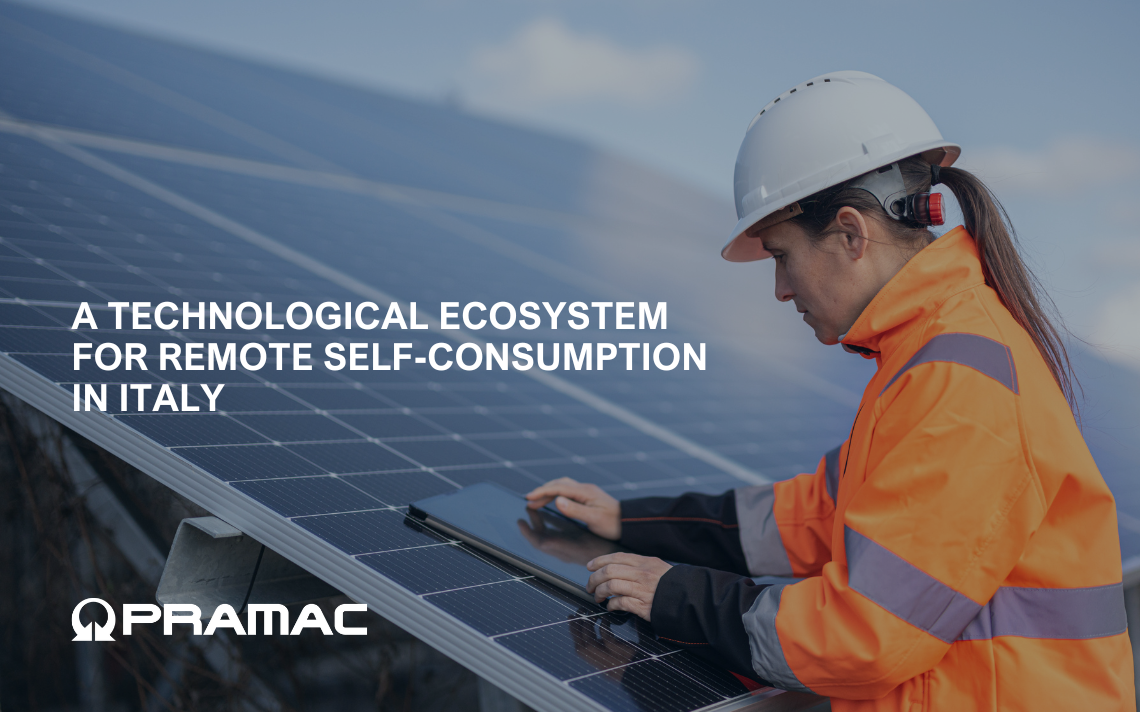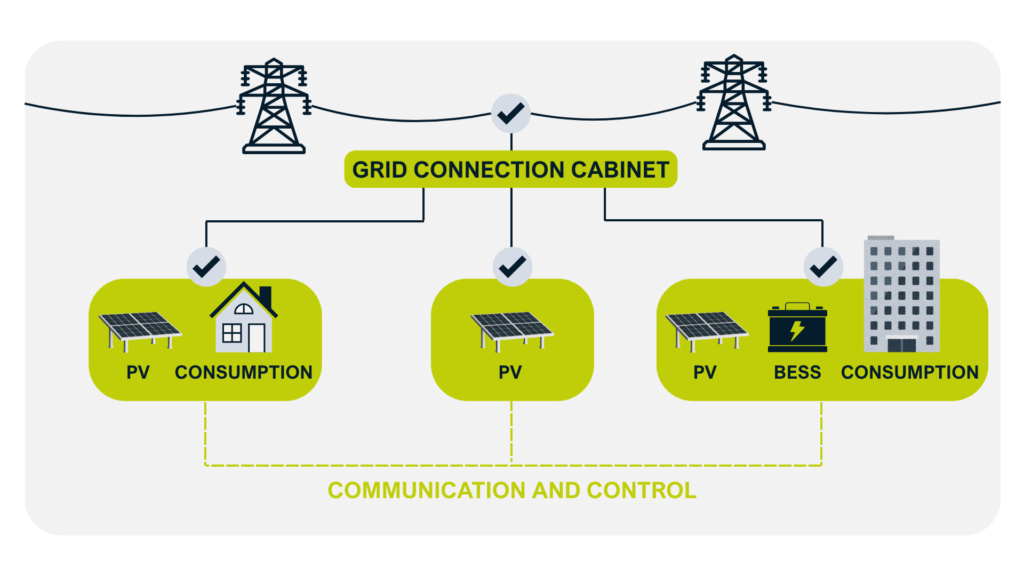
Pramac Launches a Technological Ecosystem for Remote Self-Consumption in Italy
An integrated solution combining storage, control, and intelligent management to enhance distributed photovoltaics
October 9, 2025 – PRAMAC, an internationally active company in the Energy Storage and smart energy management sector, announces the launch of a new technological solution designed to enable the remote self-consumption model in Italy.
An Integrated Ecosystem to Maximize Renewable Energy
The solution is designed to offer a complete, scalable, and highly technological system capable of enhancing the energy produced by multiple photovoltaic plants distributed across different sites but connected to the same primary substation.
Thanks to this innovative architecture, the generated energy can be made available for consumption within a single energy user, maximizing self-consumption even in the presence of distributed installations.
The system synergistically integrates battery energy storage systems (BESS), advanced control infrastructures, and Pramac’s proprietary Energy Management System (EMS), creating a virtual energy network that optimizes self-consumption, reduces grid withdrawals, and increases users’ energy autonomy.
A Proprietary and Flexible EMS
At the core of the architecture lies Pramac’s proprietary EMS, designed to offer advanced real-time monitoring, control, and management functionalities.
The system is highly customizable and compatible with different plant configurations, even in complex contexts. This flexibility allows for intelligent energy flow management, ensuring the maximum enhancement of photovoltaic production and operational continuity.
Distributed Energy, Centralized Management
The new solution enables companies and industrial operators to overcome the limits of local self-consumption, leveraging multiple distributed photovoltaic systems in a synergistic way.
Through smart devices capable of coordinating energy flows in real time between production and consumption sites, Pramac offers a model characterized by high efficiency, reliability, and operational flexibility.
Pilot Project in Trentino
The solution has already been successfully implemented in Trentino, where five independent photovoltaic sections were integrated, all connected to the same primary substation.
The battery energy storage system, housed in a 20-foot container, has a power capacity of 264 kW and an energy capacity of 1066 kWh. This unit is equipped with advanced sensors, fire protection systems, climate control, intelligent control devices, and remote monitoring interfaces, ensuring the customer high standards of operational safety and continuous operation.
Thanks to this configuration, the customer recorded an increase in self-consumed energy of approximately 30% compared to using photovoltaic generation alone, resulting in higher energy revenues and a significant reduction in the return on investment.
20-Year Incentives as an Economic Driver
The economic advantage of the solution is further enhanced by incentives offered by the GSE for remote self-consumption, valid for a period of 20 years.
Specifically, a Valorization Fee (CV) is provided, which reimburses certain tariff components on the self-consumed energy, along with a Premium Tariff (TP) of up to €0.10/kWh, which can be combined with the CV. Overall, the value of these incentives can reach between €0.12 and €0.16 per kilowatt-hour of self-consumed energy, representing a significant economic leverage for the viability of the entire system.
A Scalable Model for National Adoption
The Trentino case demonstrates the practical and scalable applicability of Pramac’s solution in other industrial settings.
The integration of BESS, EMS, and distributed photovoltaics represents a replicable and sustainable model, capable of turning energy production into a clear, measurable, and long-term competitive advantage for Italian businesses.

Figure 1: Conceptual diagram of the remote individual self-consumption setup